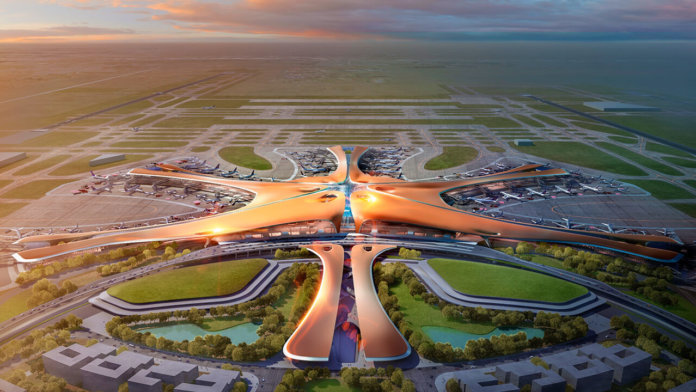The air gate of any state is its calling card. Therefore, the governments of many countries do not spare money for the construction of truly colossal airports, equipped with the latest technology. Such facilities provide jobs for thousands of people; located inside shops, hotels and other infrastructure facilities bring considerable additional income.
In our ranking, we have collected the largest airports in the world in terms of passenger traffic. We will also tell you about the largest airport in the world in terms of area.
The largest airports in the world in terms of passenger traffic
10. Sheremetyevo (Russia, Moscow) - 45.8 million people / year
 Among the largest airports in Russia in terms of passenger traffic, the undisputed leader is the Moscow "Sheremetyevo" named after A.S. Pushkin. In 2018, it far outstripped Domodedovo, the second largest airport in Moscow in terms of passenger numbers (45.8 million versus 29.4 million, respectively).
Among the largest airports in Russia in terms of passenger traffic, the undisputed leader is the Moscow "Sheremetyevo" named after A.S. Pushkin. In 2018, it far outstripped Domodedovo, the second largest airport in Moscow in terms of passenger numbers (45.8 million versus 29.4 million, respectively).
However, despite the impressive figure for Russia, Sheremetyevo is far behind its European and American counterparts. There, to enter the top ten, you need to have a passenger traffic of 69 million people, like the French Charles de Gaulle airport.
9. Shanghai-Pudong International Airport (China, Shanghai) - 70 million people / year
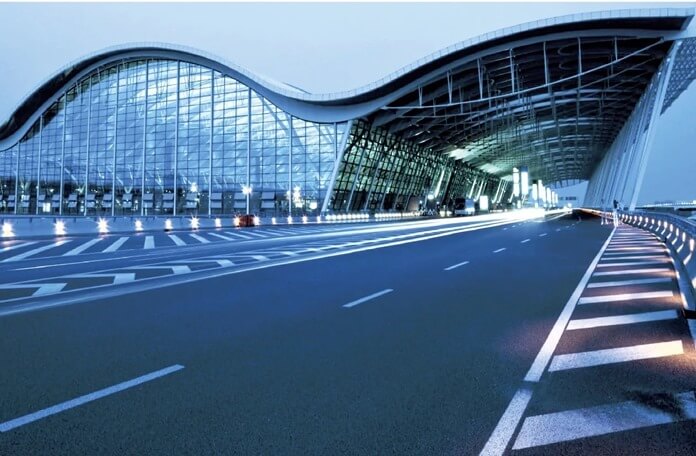
This airport was opened in 1999 to ease the load on another Shanghai airport, Hongqiao. Since then, Shanghai Pudong has become one of the busiest airports in China. Hongqiao is still a major airport, but it handles mainly domestic flights, while Pudong has both domestic and international flights.
The airport management has ambitious plans - to overtake Hong Kong in passenger traffic in the next couple of years. For this, it is planned to build another main terminal, as well as a satellite terminal with two additional runways, which will increase the annual passenger capacity of Shanghai-Pudong to 80 million people. It received 70 million people last year.
8. Hong Kong International Airport (Hong Kong) - 72.8 million people / year
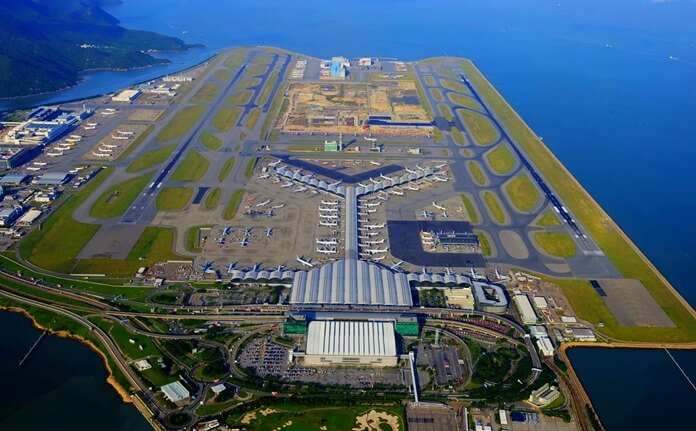 This major airport, informally named Chek Lap Kok, was built to replace Kai Tak Airport (formerly Hong Kong International Airport) and opened in July 1998. Kai Tak, built in 1925, had only one runway (it was notoriously dangerous, and a real challenge for any pilot who had to land there).
This major airport, informally named Chek Lap Kok, was built to replace Kai Tak Airport (formerly Hong Kong International Airport) and opened in July 1998. Kai Tak, built in 1925, had only one runway (it was notoriously dangerous, and a real challenge for any pilot who had to land there).
The new Chek Lap Kok Airport was designed with a huge passenger capacity in mind and includes two runways and a huge service area. It currently serves more than 1,100 flights a day, employs over 73,000 employees, and operates over 320 stores and 100 restaurants. Last year, 72.8 million passengers visited Hong Kong International Airport.
It has also received an impressive array of awards, including Skytrax's World's Leading Airport in 2001-2005, 2007-2008 and 2011.
7. Heathrow (UK, London) - 78 million people / year
 The international air gateway to the British capital annually receives 78 million passengers. Heathrow is the busiest airport in Europe.
The international air gateway to the British capital annually receives 78 million passengers. Heathrow is the busiest airport in Europe.
By the way, the airport is not very well located - the runways are in the lowlands, where the famous London fog often gathers. True, in the event of a flight delay, passengers can pass the time in one of the the world's best Duty Free shops.
6. O'Hare International Airport (USA, Chicago) - 79.8 million people / year
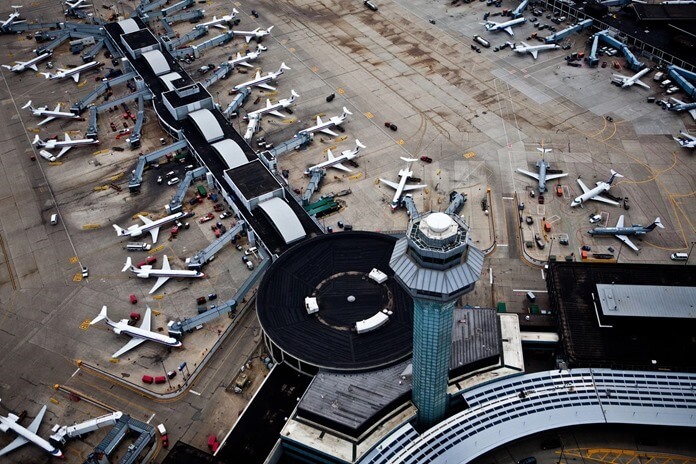 O'Hare International Airport, located in northwest Chicago, is the third largest airport in the United States. In 2018, 79.8 million passengers passed through it, making it the sixth busiest airport in the world.
O'Hare International Airport, located in northwest Chicago, is the third largest airport in the United States. In 2018, 79.8 million passengers passed through it, making it the sixth busiest airport in the world.
In fact, O'Hara was the busiest airport in the world until 1998, when Hartsfield-Jackson forced it out of Atlanta.
O'Hara is a very important strategic partner for several of the largest US airlines. It is home to the largest hub for United Airlines, both in terms of annual passengers and daily flights. The airport is also the second largest hub for American Airlines and plays a huge role in their business in the Midwest.
In 2017, O'Hare was ranked as the largest mega-hub in the US (and the fourth largest in the world). This means it has as many connections as possible between inbound and outbound flights during any six hour window.
5. Los Angeles International Airport (USA, Los Angeles) - 84.5 million people / year
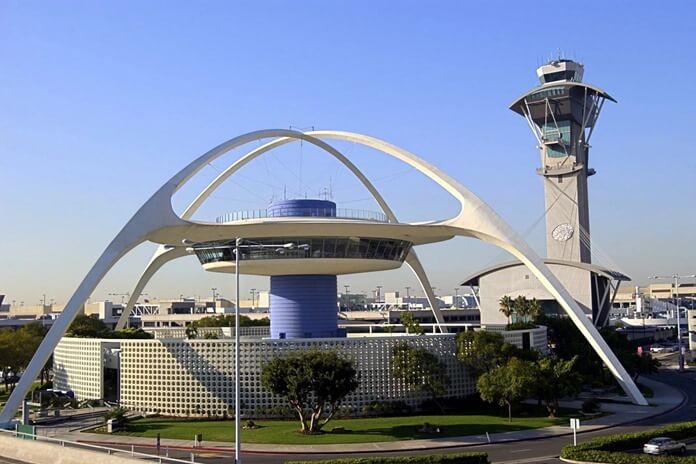 In fifth place, with a passenger traffic of 84.5 million, is Los Angeles International Airport. It is the second largest airport in the United States and the only airport in the world that all three American carriers (American, Delta and United) have chosen as their hub.
In fifth place, with a passenger traffic of 84.5 million, is Los Angeles International Airport. It is the second largest airport in the United States and the only airport in the world that all three American carriers (American, Delta and United) have chosen as their hub.
In May 2017, it also became home to the first private terminal in the United States, located at the back of the airport, away from the public and the paparazzi. Celebrities only need 70 steps from the terminal to the plane, while regular passengers need over 2,000 steps.
4. Tokyo-Haneda International Airport (Japan, Tokyo) - 85.2 million people / year
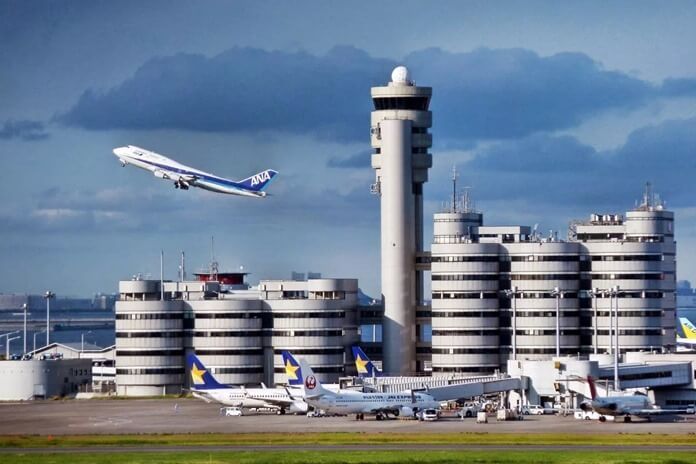 Initially, this airport was intended for domestic flights, while the international hosted the second capital airport - Narita. However, in recent years, it was here that most of the Asian airlines were transferred, which made
Initially, this airport was intended for domestic flights, while the international hosted the second capital airport - Narita. However, in recent years, it was here that most of the Asian airlines were transferred, which made
Tokyo International Airport is one of the busiest in Asia. The annual passenger traffic is about 85.2 million people.
3. Al Maktoum (UAE, Dubai) - 88 million people / year
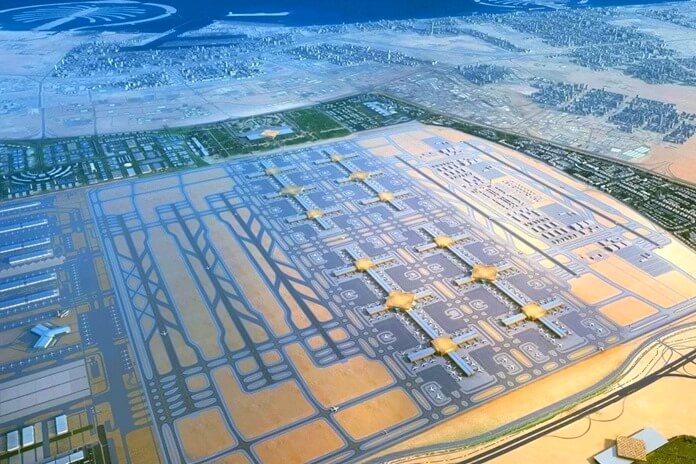 The $ 33 billion project began operations in 2010. Currently, the airport is under development and after the completion of all works, it will certainly become the largest in the world.
The $ 33 billion project began operations in 2010. Currently, the airport is under development and after the completion of all works, it will certainly become the largest in the world.
The area of the airport together with infrastructure facilities is about 140 thousand square kilometers, which is slightly less than the area of the state of Liechtenstein. Al Maktoum is one of the few airports that can accommodate the world's largest passenger airliners, the Airbus A380.
By 2019, the capacity of Al Maktoum Airport was over 88 million people per year.
2. Shoudou (China, Beijing) - 95 million people / year
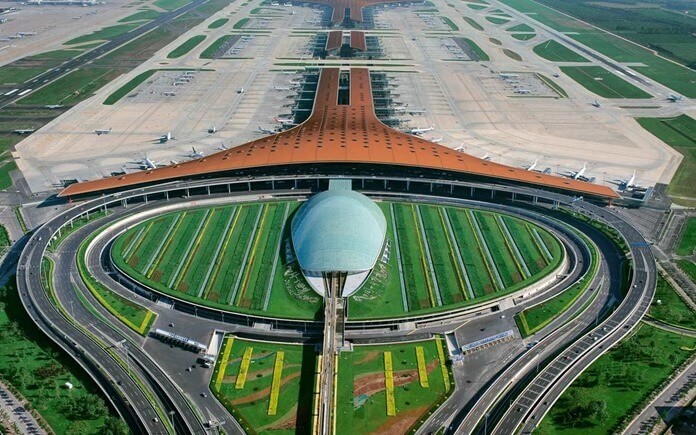 The world's second largest airport by passenger traffic began operations ahead of the 2008 Beijing Olympics. Despite its relatively small footprint of 1.7 square kilometers, Capital Airport receives over a thousand flights daily. Over 95 million people pass through it.
The world's second largest airport by passenger traffic began operations ahead of the 2008 Beijing Olympics. Despite its relatively small footprint of 1.7 square kilometers, Capital Airport receives over a thousand flights daily. Over 95 million people pass through it.
The airport is equipped with the latest technology. High-speed wi-fi internet is available to passengers, and the sorting of baggage of millions of people is fully automatic on the underground floor of the airport. The "highlight" of the airport is the winter garden, built in the waiting room, and repeating the gardens of the imperial palace.
1. Hartsfield-Jackson (USA, Atlanta) - 104 million people / year
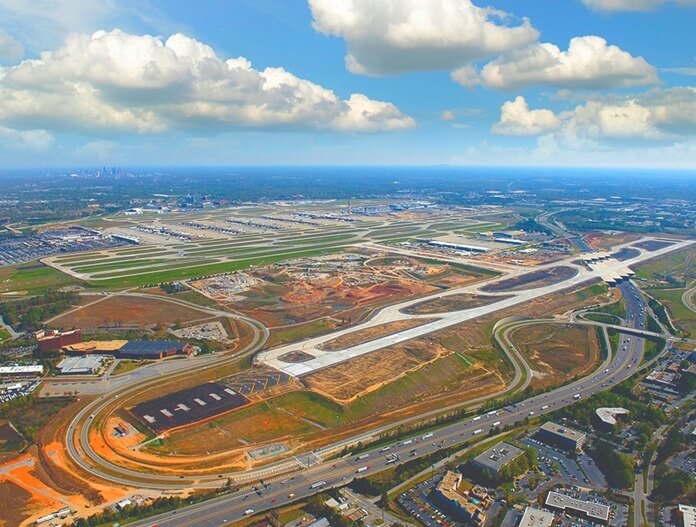 Among the largest airports in the world, none can compete with the Atlanta airport in terms of passenger traffic. The busiest airport in the world receives over 100 million passengers annually. In 2018, this figure reached 103.9 million.
Among the largest airports in the world, none can compete with the Atlanta airport in terms of passenger traffic. The busiest airport in the world receives over 100 million passengers annually. In 2018, this figure reached 103.9 million.
All six airport lounges are connected by an automated passenger transportation system - these are comfortable electric trains that do not require the presence of a driver.
By the way, in the States, planes are the most popular form of transport for long-distance travel. Local airlines charge a flight that is comparable to the cost of ground transportation.
The largest airport in the world by area
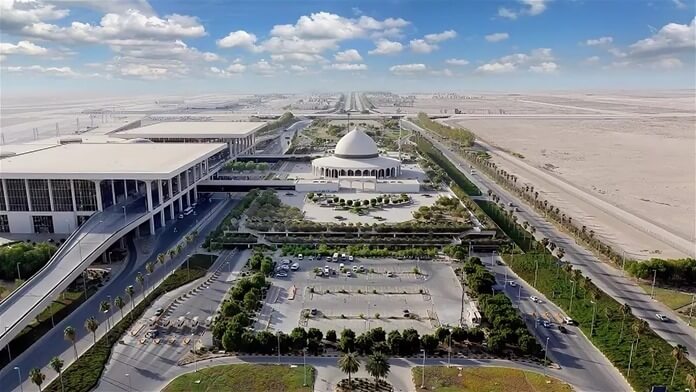
King Fahd International Airport, located near Dammam, Saudi Arabia, spans 77,600 hectares (776 sq. Km), making all the other airports on this list look like a Lego car set compared to a real car.
In the early 1990s, this airport was the location of aircraft that took part in the conflict in the Persian Gulf. And in 1999 it was reoriented for commercial use.
 Saudi Airport is larger than some of smallest countries in the worldfor example, states such as Bahrain and Grenada. But here's a fun fact: only 3,675 hectares of this area (that is, less than 5% of the available space) is used for airport premises.
Saudi Airport is larger than some of smallest countries in the worldfor example, states such as Bahrain and Grenada. But here's a fun fact: only 3,675 hectares of this area (that is, less than 5% of the available space) is used for airport premises.
If we had indicated the actual size of the airport, it would in no way qualify for the title of "largest airport".
Due to its inconvenient location, King Fahd International Airport is underloaded in terms of passenger traffic (about 5 million passengers per year). Thus, it can be said that the largest airport in the world is the most unproductive. But he is proud to serve the royal family of Saudi Arabia, for which the Royal terminal was specially built.

